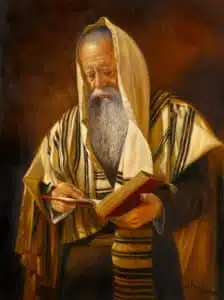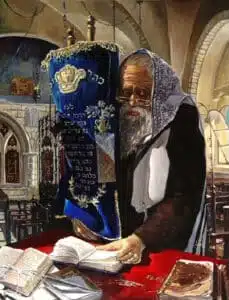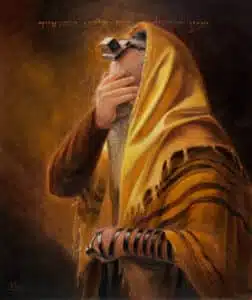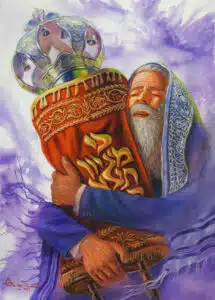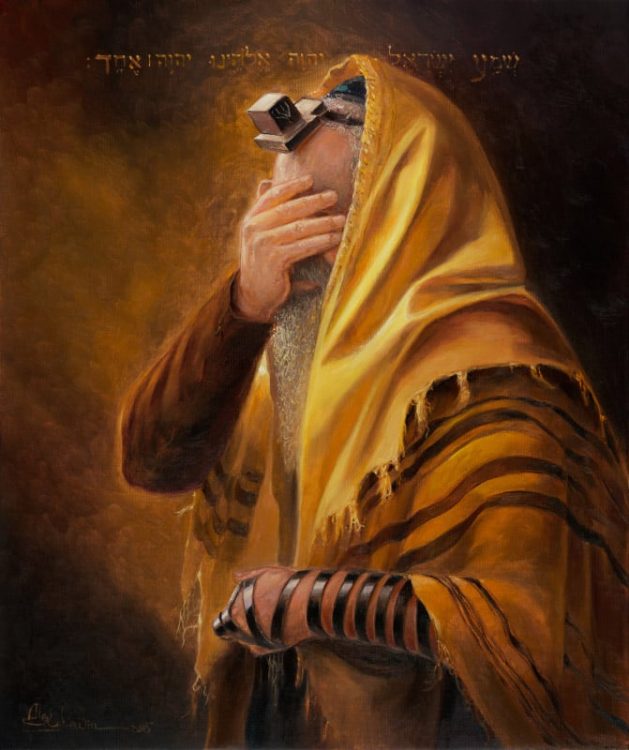
Picture a canvas. Not the serene landscapes of Impressionism, nor the fiery abstracts of Expressionism. This canvas holds a different story, one woven with threads of faith, tradition, and resilience. This is the tapestry of Jewish paintings, and it’s time to unfurl its hidden treasures.
Move beyond the familiar menorahs and Stars of David. Jewish art isn’t a monolith, confined to religious iconography. It’s a kaleidoscope, reflecting the vibrant spectrum of Jewish experiences across time and space. Let’s delve into the lesser-known corners of this artistic legacy.
1. Women Behind the Brush: For centuries, Jewish women were largely absent from the art world. But history whispers their stories nonetheless. In 19th-century Germany, Judy Peiser, defying societal norms, captured the quiet dignity of Jewish life in her self-portraits and scenes of domesticity [1]. And in the vibrant artistic scene of 20th-century Palestine, pioneering painters like Anita Poppersky challenged stereotypes with their bold expressionism, exploring themes of identity and social awareness [2].
2. Beyond Borders: Jewish art isn’t confined to ghettos and shtetls. Look to Morocco, where vibrant ketubahs, adorned with intricate henna patterns, tell stories of love and faith [3]. Or travel to India, where the Bene Israel community interweaves Hindu symbolism with Jewish narratives in their synagogue murals [4]. These regional styles, often overlooked, weave a global tapestry of Jewish artistic expression.
3. From Sacred Texts to Paint: The Torah isn’t just written; it’s also painted. In illuminated manuscripts, medieval Jewish artists transformed words into dazzling illuminations, using swirling calligraphy and symbolic motifs to bring biblical stories to life [5]. These intricate artworks weren’t mere decoration; they were visual commentaries, enhancing the understanding and appreciation of sacred texts.
4. Hidden in Plain Sight: Look closer, and you might find Jewish stories nestled within seemingly secular canvases. Take Marc Chagall’s dreamlike scenes of floating villages and fiddling angels. While not overtly religious, they are infused with Jewish folklore and mysticism, inviting viewers to decipher their hidden meanings [6].
Beyond the Stats:
- Did you know that the world’s largest collection of Jewish art is housed not in Israel, but in New York City, at the Jewish Museum? (Source: The Jewish Museum: https://thejewishmuseum.org/index.php/)
- A 2019 study found that online engagement with Jewish art posts increased by 25% when accompanied by stories about the artists and their cultural context. (Source: Social Media Today: https://www.socialmediatoday.com/)
So, the next time you encounter a Jewish painting, resist the urge to categorize. Look for the whispers of stories, the echoes of tradition, and the vibrant threads of identity woven into every brushstroke. Jewish art is more than just depictions of faith; it’s a conversation starter, a window into a rich and diverse cultural tapestry. Unravel its beauty, and you might just discover a piece of yourself reflected in its depths.
This is just a starting point. Feel free to expand on the information provided with your own research and insights. You can also add personal anecdotes or stories related to Jewish paintings to make the blog post even more engaging. I hope this helps!
Citations:
- Judy Peiser: https://en.wikipedia.org/wiki/Judith_Pella
- Anita Poppersky: https://www.facebook.com/MuseumofModernArt/videos/in-the-studio-postwar-abstract-painting/10156058513722281/
- Moroccan ketubahs: https://www.myjewishlearning.com/
- Bene Israel art: https://en.wikipedia.org/wiki/Bene_Israel
- Illuminated manuscripts: https://www.metmuseum.org/art/collection/search?PerPage=60&page=13&q=illuminated+manuscripts
- Marc Chagall: https://en.wikipedia.org/wiki/Marc_Chagall


















